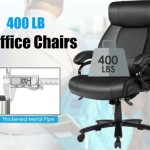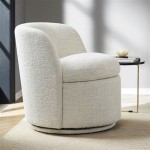Ergonomic Office Chairs Without Arms: A Comprehensive Guide
The modern workplace increasingly emphasizes employee well-being, recognizing the direct correlation between a comfortable workspace and increased productivity. Ergonomic office chairs play a crucial role in achieving this, and while many models feature armrests, a growing number of users and organizations are exploring the benefits of ergonomic office chairs without arms. This article will delve into the advantages, considerations, and suitable applications of armless ergonomic chairs, providing a thorough understanding of their place in the ergonomic landscape.
Ergonomics, in its simplest form, is the science of designing and arranging workplaces, products, and systems so that they fit the people who use them. The goal is to optimize human well-being and overall system performance. In the context of office chairs, ergonomics focuses on providing support for the body, promoting good posture, and reducing the risk of musculoskeletal disorders (MSDs) associated with prolonged sitting. While armrests are often touted as essential ergonomic features, their absence can, in certain situations, be beneficial or even preferable.
The decision to choose an ergonomic office chair, whether with or without arms, should be based on a thorough assessment of individual needs, work tasks, and the overall work environment. Understanding the pros and cons of each option is critical for making an informed decision that promotes comfort, health, and productivity.
Key Advantages of Armless Ergonomic Office Chairs
Armless ergonomic chairs offer several distinct advantages compared to their counterparts with armrests. These advantages stem from the increased freedom of movement, adaptability to various tasks, and the promotion of healthier posture in specific scenarios.
Enhanced Freedom of Movement: One of the primary benefits of an armless chair is the unrestricted range of motion it provides. Users are not confined by armrests, allowing them to reach across their desks, interact with equipment, or engage in tasks that require a wider range of arm movements without obstruction. This is particularly beneficial for individuals who perform tasks involving frequent reaching, such as graphic designers, coders, or those working in laboratory settings. The absence of armrests also allows users to easily rotate in their chair to reach different areas of their workspace without having to adjust the chair or shift their position awkwardly.
Adaptability to Varied Tasks and Workspaces: Armless chairs are inherently more versatile than chairs with fixed armrests. They can easily slide under desks of various heights, including those with low profiles or those cluttered with under-desk storage. This adaptability makes them ideal for collaborative workspaces where users may rotate between different workstations or for home offices with limited space. Furthermore, armless chairs are less likely to interfere with keyboard trays or other desk accessories, allowing for a more streamlined and customized workspace setup. The ability to adapt to different body types and work styles also contributes to their versatility, as the lack of armrests eliminates potential discomfort caused by armrests that are too high, too low, or too wide apart.
Potential for Improved Posture: While armrests are often intended to support the arms and shoulders, they can sometimes contribute to poor posture if not properly adjusted or if used incorrectly. Some users tend to slouch or lean on armrests, which can lead to rounded shoulders and a forward head posture. An armless chair encourages users to engage their core muscles to maintain an upright posture. This active engagement can strengthen postural muscles and promote a more natural alignment of the spine. However, it's crucial to note that this benefit is contingent on the user actively maintaining good posture and the chair providing adequate lumbar support. Without active engagement and proper support, an armless chair may not automatically lead to improved posture.
In addition to these key advantages, armless chairs can also be more aesthetically pleasing in certain environments. Their minimalist design can contribute to a cleaner and more modern look, which may be desirable in contemporary office spaces.
Considerations and Potential Drawbacks
Despite the advantages, there are also considerations and potential drawbacks to using armless ergonomic chairs. It is essential to address these to determine if an armless chair is the right choice for a specific user and work environment.
Lack of Arm and Shoulder Support: The most obvious drawback of an armless chair is the absence of support for the arms and shoulders. For individuals who spend long hours typing or performing tasks that require sustained arm elevation, this lack of support can lead to fatigue, discomfort, and potentially even upper extremity disorders. Without armrests, the muscles in the shoulders and upper back must work harder to support the weight of the arms, which can result in muscle strain and pain. This is particularly relevant for individuals who already have pre-existing shoulder or neck problems. In such cases, an armless chair may exacerbate these conditions.
Reliance on Active Posture and Core Engagement: As mentioned earlier, the benefit of improved posture from an armless chair is contingent on active engagement of core muscles. While this can be beneficial in the long run, it also requires conscious effort and discipline. Individuals who are accustomed to relying on armrests for support may find it challenging to maintain good posture without them. Furthermore, those with weak core muscles or who are prone to slouching may find it difficult to sustain proper posture throughout the day. In these instances, an armless chair could inadvertently promote poor posture if the user does not actively engage their core and maintain an upright position. This is especially true during periods of fatigue or when the user is concentrating intensely on a task.
Potential for Increased Load on Lower Back: Although an armless chair can encourage better posture, it can also indirectly increase the load on the lower back. Without armrests to share the weight of the upper body, the lumbar region must bear a greater portion of the load. This can be particularly problematic for individuals who have pre-existing lower back pain or who spend long hours sitting. To mitigate this risk, it is crucial to ensure that the armless chair provides adequate lumbar support. The chair should have an adjustable lumbar support mechanism that can be customized to the user's individual needs. It is also important to encourage frequent breaks to stand up and stretch to relieve pressure on the lower back.
Beyond these primary concerns, some users may simply find armless chairs less comfortable or less aesthetically pleasing. Personal preference plays a significant role in the overall satisfaction with any ergonomic chair.
Suitable Applications and Recommendations
Given the advantages and considerations, armless ergonomic chairs are best suited for specific applications and user profiles. By understanding these ideal use cases, organizations and individuals can make informed decisions about incorporating armless chairs into their workplaces.
Ideal for Tasks Requiring Frequent Movement: Armless chairs are particularly well-suited for individuals who perform tasks that require frequent movement and reaching. This includes graphic designers, architects, laboratory technicians, and other professionals who need to easily access different areas of their workstations. The unrestricted range of motion provided by an armless chair allows these users to perform their tasks more efficiently and comfortably. In these scenarios, the advantages of increased mobility outweigh the potential drawbacks of lacking arm support.
Suitable for Collaborative Workspaces: Due to their adaptability and space-saving design, armless chairs are often a good choice for collaborative workspaces. These chairs can easily slide under desks of varying heights and are less likely to interfere with shared equipment. This makes them ideal for environments where users frequently rotate between different workstations or engage in collaborative projects. Furthermore, the minimalist design of armless chairs can contribute to a cleaner and more organized appearance in shared workspaces.
Effective for Promoting Active Sitting and Posture: For individuals who are committed to improving their posture and engaging their core muscles, an armless chair can be a valuable tool. However, it is essential to emphasize the importance of conscious effort and proper chair adjustments. Users should be educated on the principles of ergonomic sitting and encouraged to take frequent breaks to stand up and stretch. Additionally, the armless chair should provide adequate lumbar support to prevent lower back pain. In these cases, the armless chair can serve as a catalyst for promoting healthier sitting habits.
When considering an armless ergonomic chair, it is crucial to select a model that offers adjustable height, seat depth, and lumbar support. These features allow users to customize the chair to their individual needs and preferences. Additionally, the chair should be made from high-quality materials that provide adequate cushioning and support. Ultimately, the best ergonomic office chair, whether with or without arms, is the one that best fits the user's body, work tasks, and overall work environment.

Buy Initial Basics Medium Back Ergonomic Office Chair Today

Fabric Swivel Computer Lab Drafting Task Armless Office Chair Without Armrest Staff Made In Com

Task Chair Ergonomic Rolling Without Arms Armrest

Chariot Office Supplies Teknik Ergo Comfort Mesh Back Ergonomic Operator Chair Without Arms Black 9500mesh Blk

Ergo Comfort High Back Fabric Ergonomic Operator Office Chair Without Arms Black 9500blk

5 Best Ergonomic Chairs Without Wheels For A Stylish And Functional Office Mige Furniture Factory

Boss Office Products Ergonomic Chair Review Buyer S Guide 2025

Ergo Comfort Air High Back Fabric Ergonomic Operator Office Chair Without Arms Blue 9500airblue

Boss Office Products Ergonomic Works Adjustable Drafting Chair Without Arms Blackchrome Odp Business Solutions

Chariot Office Supplies Teknik Ergo Comfort Mesh Back Ergonomic Operator Chair Without Arms Black 9500mesh Blk







